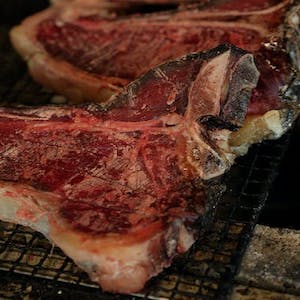Preliminary data on the microbial profile of dry and wet aged bovine meat obtained from different breeds in Sardinia

Accepted: 26 January 2023
HTML: 9
All claims expressed in this article are solely those of the authors and do not necessarily represent those of their affiliated organizations, or those of the publisher, the editors and the reviewers. Any product that may be evaluated in this article or claim that may be made by its manufacturer is not guaranteed or endorsed by the publisher.
Authors
This study aimed to evaluate the influence of dry and wet aging on microbial profile and physicochemical characteristics of bovine loins obtained from four animals of two different breeds, namely two Friesian cull cows and two Sardo-Bruna bovines. During dry and wet aging aerobic colony count, Enterobacteriaceae, mesophilic lactic acid bacteria, Pseudomonas, molds and yeasts, Salmonella enterica, Listeria monocytogenes and Yersinia enterocolitica, pH and water activity (aw) were determined in meat samples collected from the internal part of the loins. Moreover, the microbial profile was determined with sponge samples taken from the surface of the meat cuts. Samples obtained from Friesian cows were analyzed starting from the first day of the aging period and after 7, 14, and 21 days. Samples obtained from the Sardo Bruna bovines were also analyzed after 28 and 35 days. Wet aging allowed better control of Pseudomonas spp. during storage that showed statistically lower levels (P>0.05) in wet-aged meats with respect to dry-aged meats during aging and particularly at the end of the period (P>0.01) in both cattle breeds. At the end of the experiment (21 days), aerobic colony count and Pseudomonas in Fresian cows’ dry-aged meats showed mean levels >8 log, while lactic acid bacteria mean counts >7 log were detected in wet-aged meats of both cattle breeds. In meats submitted to dry aging, pH was significantly higher (P<0.01) with respect to wet-aged meats at all analysis times and in both cattle breeds. Aw showed a stable trend during both dry and wet aging without significant differences. These preliminary results highlight the critical importance of the strict application of good hygiene practices during all stages of production of these particular cuts of meat intended for aging.
How to Cite

This work is licensed under a Creative Commons Attribution-NonCommercial 4.0 International License.
PAGEPress has chosen to apply the Creative Commons Attribution NonCommercial 4.0 International License (CC BY-NC 4.0) to all manuscripts to be published.

 https://doi.org/10.4081/ijfs.2023.11060
https://doi.org/10.4081/ijfs.2023.11060



